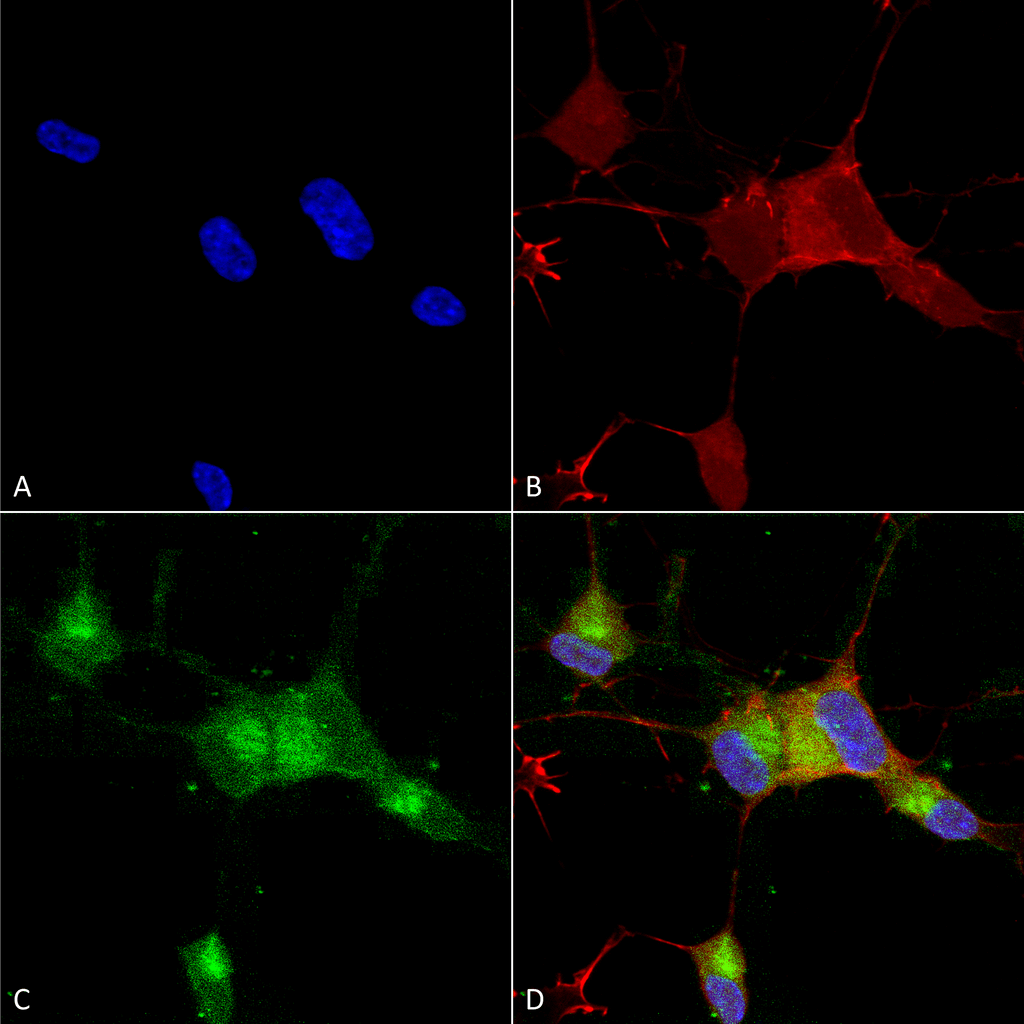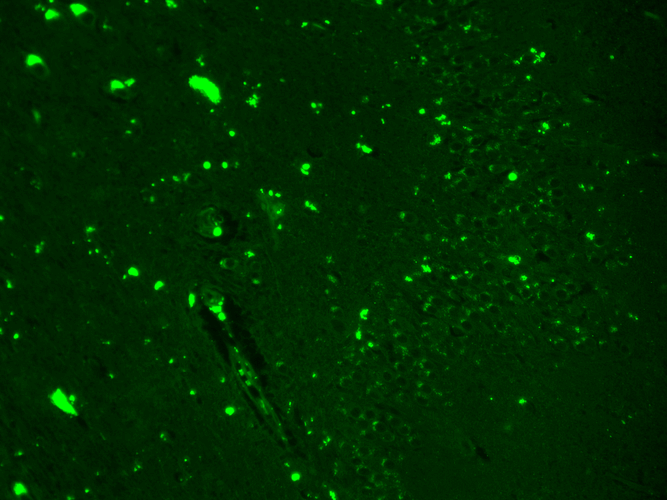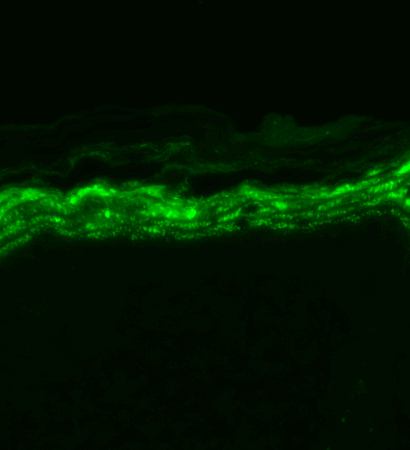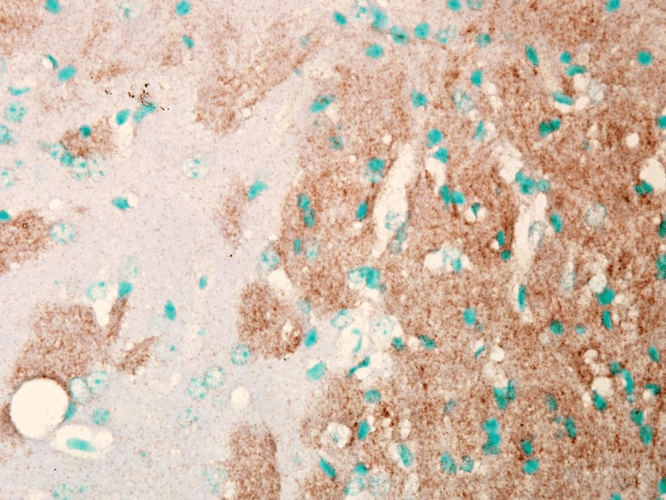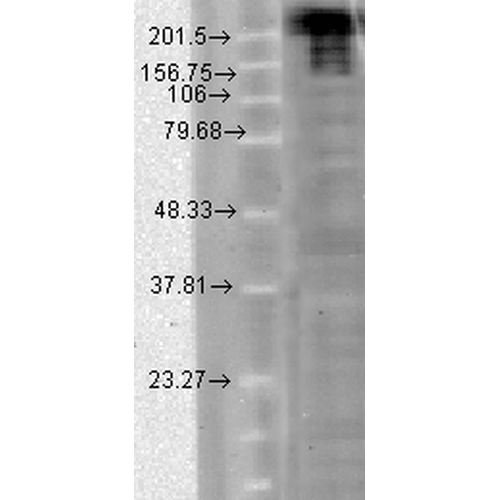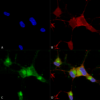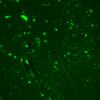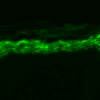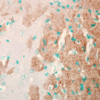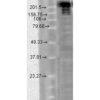Anti-Nav1.7 Na+ Channel Antibody (11517)
$466.00
| Host | Quantity | Applications | Species Reactivity | Data Sheet | |
|---|---|---|---|---|---|
| Mouse | 100ug | WB,IHC,ICC/IF,IP,AM | Human, Mouse, Rat |  |
SKU: 11517
Categories: Antibody Products, Ion Channel Antibodies, New Products, Products
Overview
Product Name Anti-Nav1.7 Na+ Channel Antibody (11517)
Description Anti-Nav1.7 Na+ Channel Mouse Monoclonal Antibody
Target Nav1.7 Na+ Channel
Species Reactivity Human, Mouse, Rat
Applications WB,IHC,ICC/IF,IP,AM
Host Mouse
Clonality Monoclonal
Clone ID S68-6
Isotype IgG1
Immunogen Fusion protein, aa 1751-1946 (cytoplasmic C-terminus) of human Nav1.7 (accession no. Q15858).
Properties
Form Liquid
Concentration Lot Specific
Formulation PBS, pH 7.4; 50% glycerol, 0.09% sodium azide.
Buffer Formulation Phosphate Buffered Saline
Buffer pH pH 7.4
Buffer Anti-Microbial 0.09% Sodium Azide
Buffer Cryopreservative 50% Glycerol
Format Purified
Purification Purified by Protein G affinity chromatography
Specificity Information
Specificity This antibody recognizes human, mouse, and rat Nav1.7. It does not cross-react with other Nav channels.
Target Name Sodium channel protein type 9 subunitα
Target ID Nav1.7 Na+ Channel
Uniprot ID Q15858
Alternative Names Neuroendocrine sodium channel, hNE-Na, Peripheral sodium channel 1, PN1, Sodium channel protein type IX subunitα, Voltage-gated sodium channel subunitα Nav1.7
Gene Name SCN9A
Accession Number NP_002968.1
Sequence Location Cell membrane, Cell projection, neuron projection
Biological Function Mediates the voltage-dependent sodium ion permeability of excitable membranes. Assuming opened or closed conformations in response to the voltage difference across the membrane, the protein forms a sodium-selective channel through which Na(+) ions may pass in accordance with their electrochemical gradient (PubMed:7720699, PubMed:17167479, PubMed:25240195, PubMed:26680203, PubMed:15385606, PubMed:16988069, PubMed:17145499, PubMed:19369487, PubMed:24311784). It is a tetrodotoxin-sensitive Na(+) channel isoform (PubMed:7720699). Plays a role in pain mechanisms, especially in the development of inflammatory pain (PubMed:17167479, PubMed:17145499, PubMed:19369487, PubMed:24311784). {PubMed:15178348, PubMed:15385606, PubMed:16988069, PubMed:17145499, PubMed:17167479, PubMed:19369487, PubMed:24311784, PubMed:25240195, PubMed:26680203, PubMed:7720699}.
Research Areas Ion Channels
Background Ion channels are integral membrane proteins that help establish and control the small voltage gradient across the plasma membrane of living cells by allowing the flow of ions down their electrochemical gradient. Nav1.7 is a voltage-gated sodium channel that plays an important role in the generation and conduction of action potentials making it important for electrical signaling by most excitable cells. Since Nav1.7 is not present in cardiac muscle or neurons in the central nervous system, blockers of Nav1.7 will not directly affect those cells.
Application Images






Description Immunocytochemistry/Immunofluorescence analysis using Mouse Anti-Nav1.7 Monoclonal Antibody, Clone N68/6 (11517). Tissue: Neuroblastoma cells (SH-SY5Y). Species: Human. Fixation: 4% PFA for 15 min. Primary Antibody: Mouse Anti-Nav1.7 Monoclonal Antibody (11517) at 1:100 for overnight at 4°C with slow rocking. Secondary Antibody: AlexaFluor 488 at 1:1000 for 1 hour at RT. Counterstain: Phalloidin-iFluor 647 (red) F-Actin stain; Hoechst (blue) nuclear stain at 1:800, 1.6mM for 20 min at RT. (A) Hoechst (blue) nuclear stain. (B) Phalloidin-iFluor 647 (red) F-Actin stain. (C) Nav1.7 Antibody (D) Composite.

Description Immunohistochemistry analysis using Mouse Anti-Nav1.7 Sodium Channel Monoclonal Antibody, Clone N68/6 (11517). Tissue: hippocampus. Species: Human. Fixation: Bouin's Fixative and paraffin-embedded. Primary Antibody: Mouse Anti-Nav1.7 Sodium Channel Monoclonal Antibody (11517) at 1:1000 for 1 hour at RT. Secondary Antibody: FITC Goat Anti-Mouse (green) at 1:50 for 1 hour at RT.

Description Immunohistochemistry analysis using Mouse Anti-Nav1.7 Sodium Channel Monoclonal Antibody, Clone N68/6 (11517). Tissue: backskin. Species: Mouse. Fixation: Bouin's Fixative and paraffin-embedded. Primary Antibody: Mouse Anti-Nav1.7 Sodium Channel Monoclonal Antibody (11517) at 1:100 for 1 hour at RT. Secondary Antibody: FITC Goat Anti-Mouse (green) at 1:50 for 1 hour at RT.

Description Immunohistochemistry analysis using Mouse Anti-Nav1.7 Sodium Channel Monoclonal Antibody, Clone N68/6 (11517). Tissue: Brain Slice. Species: Mouse. Fixation: Frozen sections. Primary Antibody: Mouse Anti-Nav1.7 Sodium Channel Monoclonal Antibody (11517) at 1:1000. Secondary Antibody: HRP/DAB Detection System: Biotinylated Goat Anti-Mouse, Streptavidin Peroxidase, DAB Chromogen (brown). Counterstain: Mayer Hematoxylin (purple/blue) nuclear stain.

Description Western Blot analysis of Hamster CHO cells showing detection of Nav1.7 Sodium Channel protein using Mouse Anti-Nav1.7 Sodium Channel Monoclonal Antibody, Clone N68/6 (11517). Load: 15 µg. Block: 1.5% BSA for 30 minutes at RT. Primary Antibody: Mouse Anti-Nav1.7 Sodium Channel Monoclonal Antibody (11517) at 1:1000 for 2 hours at RT. Secondary Antibody: Sheep Anti-Mouse IgG: HRP for 1 hour at RT.
Handling
Storage This antibody is stable for at least one (1) year at -20°C.
Dilution Instructions Dilute in PBS or medium that is identical to that used in the assay system.
Application Instructions Immunoblotting: use at 1ug/mL
Immunohistochemistry: use at 1ug/mL
These are recommended concentrations.
Enduser should determine optimal concentrations for their applications.
Immunohistochemistry: use at 1ug/mL
These are recommended concentrations.
Enduser should determine optimal concentrations for their applications.
References & Data Sheet
Data Sheet  Download PDF Data Sheet
Download PDF Data Sheet
 Download PDF Data Sheet
Download PDF Data Sheet

